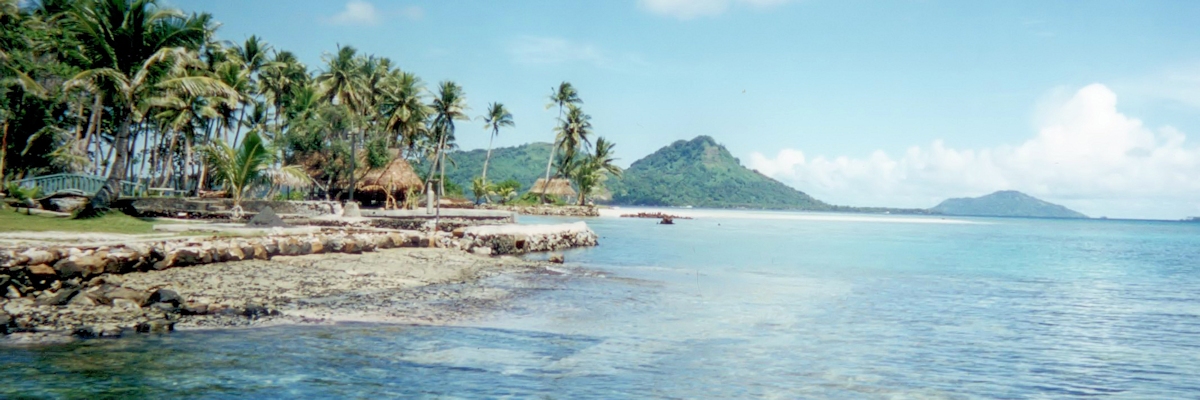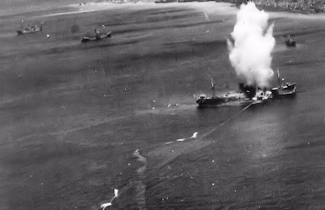Chuuk History and Operation Hailstorm

We came to see some wrecks and boy did we see some wrecks!! The following is a brief history of Chuuk Lagoon taken in part from the S.S. Thorfinn website.
Based on archaeological material found off one of the lagoon islands, people have inhabited Chuuk for about 2,000 years. Chuuk legends refer to the first inhabitants as having come from Kosrae, about 1300 km to the east.
The first Europeans, the Spanish, arrived in 1565, 34 years after Magellan passed by on his first voyage. Spanish, Portuguese, English, French, American, Russian, and German explorers, traders, whalers, and missionaries subsequently visited the islands, but the Chuukese were reported to be 'hostile', and it was not until 1886 that the Spanish established a presence and rule over Micronesia, including Chuuk.
After the Spanish-American War of 1898, an arrangement among Spain, Germany, and the United States allowed Micronesia, except for Guam, to be purchased by Germany from the United States for about $4.2 million. At the beginning of World War I, Japan seized the islands in a secret and controversial pact with Great Britain to counter the German presence in the Pacific.
The Japanese Navy controlled Micronesia from 1914 to 1922 from its headquarters on Dublon (now called Tonoas) in Chuuk. In 1922, a civilian administration based in Koror, Palau, took charge and began aggressively using Micronesia to suit Japan's needs for economic and strategic expansion.
Chuuk was considered the most formidable of all Japanese strongholds in the Pacific.
Klaus Lindemann, Hailstorm Over Truk Lagoon
This Japanese era saw a great build-up of arms and bases in advance of a wide military blitz over the Western Pacific. The blitz was supplied heavily from facilities at Chuuk, where often more than 1,000 merchant and war ships moored in readiness for further deployment. Five airfields supporting close to 500 aircraft provided complete protection over Chuuk's Gibraltar-like facilities. A deep lagoon, high islands and circling barrier reef provided extensive natural protection. Patrol boats, torpedo boats, submarines, tugs, landing craft, gunboats and mine sweepers contributed to the final defences and service needs to maintain this big base.
Chuuk was considered the most formidable of all Japanese strongholds in the Pacific. This reputation caused an overconfident Chuuk command to relax their vigil against invasion, in spite of U.S. forces fast approaching from the East. Supplies from Japan had almost ceased, due to immense successes of U.S. submarines finally equipped with torpedoes that found their mark. Supply convoys receiving nearly 90% losses enroute to Chuuk, deprived the garrison of food, fuel and new armaments desperately required to maintain strength.
The overall American strategy in the Pacific called "island hopping", was to isolate and cut off specific Japanese bases that could be easily overcome, while bypassing the stronger ones. Once the Japanese supply lines had been disrupted, the weakened strongholds, previously bypassed could be taken if necessary.
Admiral Spruance the theatre commander, was executing this strategy by directing various strike operations throughout the various Pacific island chains. As part of this he dispatched Rear Admiral Mitscher and Task Force 58 to conduct raids throughout the Caroline islands. The task force consisted of the carriers USS Essex, USS Bunker Hill, USS Yorktown and USS Enterprise. There were also several light carriers, battleships, including the USS New Jersey and USS Iowa, cruisers and destroyers assigned to the task force.
On February 4, 1944 an American B-24 made a reconnaissance flight over Chuuk alerting Japanese Forces that an attack was eminent. Chuuk’s commander Admiral Koga ordered the warships anchored there to sail for safer waters. When the first wave of American carrier planes descended on Chuuk , on February 16, 1944 all that remained were supply vessels and small combatant ships. During two days of air strikes, American carrier based aircraft of sank ten warships and thirty-one transport ships. Unfortunately none of the Japanese Navy’s major capital ships were caught in the lagoon. Further, in addition to the severe damage Chuuk’s shore facilities took, the Japanese lost seventy aircraft in aerial combat and another two hundred on the ground.
American surface and submarine forces also engaged Japanese shipping trying to escape Chuuk and sunk more ships. U.S. losses were less than twenty aircraft and damage to the carrier Intrepid. This attack, coded "Operation Hailstone", caught the Japanese totally unaware, and led to one of the most successful U.S. engagements of WWII.
After a follow up attack in April, 1944, Chuuk was reduced to rubble with over 70 shipwrecks, 400 aircraft destroyed or sunk, and the menace of this big fortress removed forever.
U.S. forces declined engagement with the 40,000 troops at Chuuk, and after these attacks, starvation consumed many of the defenders before the eventual surrender of Japan late in 1945.
At the conclusion of World War II, the Japanese departed Micronesia and the United States was designated as trustee by the United Nations. Administration of Micronesia, called the Trust Territory of the Pacific Islands (TTPI) was assigned to the United States Navy until 1951 when the U.S. Department of the Interior took over. Over the next 35 years, an agreement on the independence of what became known as the Federated States of Micronesia (FSM) was negotiated through a system of "Compacts of Free Association" between the United States and the Federated States.
About 20 after WWII, adventure divers such as Jacques Cousteau, Al Giddings and Klaus Lindemann discovered the wonders of this huge sunken fleet, replete with incredible vistas of war machinery, soft coral draperies, fish life and personal mementos.





